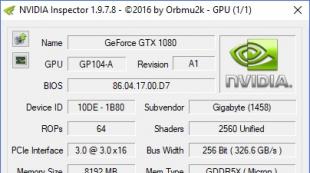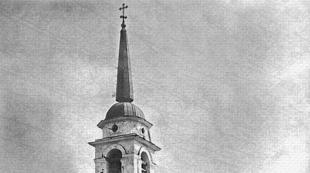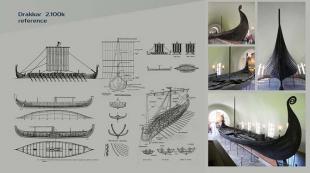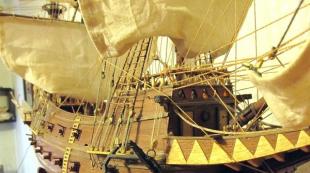What constellation is Ursa Major in? The number of bright stars in the Big Dipper bucket. How many stars are there in the constellation Ursa Major. Rotation of the Huge Bucket
Ursa Major is a constellation with which schoolchildren get acquainted in the 2nd grade, taking the course "The world around us".
It is important for children to learn how to find the star "bucket" in the night sky, because the constellation is a reference point for searching for many other celestial objects.
Description of the constellation Ursa Major
Ursa Major (Ursa Major) is the 3rd largest constellation in the northern hemisphere. The common name for the celestial object is the Big Dipper, since the seven main stars form a figure that looks like a bucket with a long handle.

On the territory of Eastern Europe and all of Russia, the object is observed throughout the year(the exception is autumn in the southern regions of Russia, when the constellation is too low above the horizon). The best visibility is in early spring.
The Big Dipper has been known to mankind since ancient times, and is significant in many cultures. The constellation is mentioned in the Bible and Homer's story "The Odyssey", its description is in the writings of Ptolemy.
The ancient peoples associated the star figure with a camel, a plow, a boat, a sickle, a basket. In Germany, the constellation is called the Great Basket, in China - the Imperial Chariot, in the Netherlands - the Pot, in the Arab countries - the Grave of the Mourners.
How many stars are in the constellation Ursa Major? There are seven in total, and all of them in different countries have interesting names. The inhabitants of Mongolia call them the Seven Gods, the Hindus - the Seven Wise Men.
In the representation of the American Indians, the three stars that form the "dipper handle" are three hunters chasing a bear. Alpha and beta constellations are also called "pointers", because with the help of these stars it is easy to find the North Star.
Bucket of the Big Dipper in autumn, winter, spring, summer
At different times of the year, the position of the "bear" is not the same relative to the horizon. For better orientation, use a compass.

On a clear spring night, a cluster of stars is directly above the observer. From mid-April, the "bucket" begins to move west. During the summer, the constellation gradually moves to the northwest, descends. In the last days of August, the stars can be seen in the north, as low as possible above the horizon.
In the autumn sky, it is noticeable how the constellation slowly rises, during the winter months, as you can see in the diagram below, moving to the northeast, it again rises as high as possible above the horizon by spring.
To quickly find the constellation, you should remember that in summer it is located in the northwest, in autumn - in the north, in winter - in the northeast, in spring - directly above the observer.

Depending on the time of day, the position of the star figure changes relative not only to the vault of heaven, but also to its own axis. The image below shows that in the evening in January-February, the "ladle" is in the northeast (in the picture on the right), and its "handle" is directed downwards.
During the night, the constellation passes a semicircle, in the morning it reaches the northwest (in the picture on the left), and the "handle" rushes up.
In July-August, daily changes are opposite. The same contrast is noted in the spring and autumn months.
The position of the constellation in the sky is characterized by a daily change, specific for each season of the year.
Stars of Ursa Major
Answering the question, how many stars are in the Big Dipper, indicate the 7 most noticeable points. This seven forms the same “bucket”, which is clearly visible in the night sky.

But in reality, the constellation is more extensive, consists of a larger number of points. Stars of lesser brightness form the legs and muzzle of the "bear".
The seven main stars that make up the constellation include:
- Dubhe("bear") - the alpha of the constellation, the second most intense glow. One of two signposts to the North Pole. A red giant that is 125 light years away from Earth.
- Merak(translated as "loin") - a beta star, the second pointer to the North Pole. The object is about 80 light-years distant from Earth, slightly larger than the Sun, and emits a powerful stream of infrared radiation.
- Fekda("thigh") - gamma, a dwarf star located at a distance of just under 85 light-years from our planet.
- Megrets(from Arabic "base") - delta, a blue dwarf, more than 80 light-years from Earth. The object is so named because it is the base of the long tail of the "heavenly beast".
- Aliot("tail") - epsilon, the brightest point of the constellation, is in 31st place in terms of the luminosity of objects visible in the sky (magnitude 1.8). White star, luminosity 108 times higher than that of the Sun. One of 57 celestial objects used in navigation.
- Mizar(from Arabic "belt") - a zeta star, the fourth brightest in the "bucket". The star is double, there is a less bright companion - Alcor.
- Alkaid("leader") or Benetnash ("crying") - this star, the third in luminosity, the end of the "bear's tail". Blue dwarf, distance - 100 light years from our planet.

The total number of objects in the constellation is about 125.
Of these, three pairs of stars located on the same line, located at a short distance from each other, should be noted:
- Alula Borealis (nude constellation) and Alula Australis (xi);
- Thania Borealis (lambda) and Thania Australis (mu);
- Talita Borealis (iota) and Talita Australis (kappa).
These three pairs are also known as the three gazelle jumps and are located at the bottom of the star cluster on the map below.
The figure shows the location of the main seven stars and objects of the Talita, Thania and Alula groups.
Legend of the Big Dipper
There is an ancient Greek myth by which one can understand why the constellation Ursa Major is so called.

Callisto, heiress of King Lycaon, was one of the most beautiful nymphs who served Artemis. Zeus turned his gaze to the beauty. He took the form of Artemis and seduced the girl. The goddess got angry when she noticed in the bath that her beloved nymph was pregnant and drove her away. The unfortunate Callisto went to the mountains, where she gave birth to her son Arkas.
But the misadventures of the nymph did not stop there. Hera, the wife of the seductive god, found out about Arkas, the illegitimate son of Zeus, and in revenge turned her rival into a bear. As an adult, Arkas took up hunting. Once in the mountains, he ran into a bear, but he could not even think that his own mother was in front of him. The young man wanted to shoot an arrow at the beast, but Zeus stopped him.
The main god did not allow the son to commit a terrible act, but could not break the curse given by the Hero. Taking pity on the unfortunate Callisto, Zeus turned her and his son into stars and sent them to heaven. So the Big Dipper appeared in the sky, and next to it was the son - the Little Dipper.
How to find the Big Dipper in the sky
In the temperate zone of Russia, the "bear" refers to non-setting constellations, as it is located near the North Pole. Finding a "bucket" in the sky in the evening and at night is not difficult. It is enough to see a star cluster once to remember what it looks like.
Below in the photo you can see what a "bucket" might look like in the night sky.

For those living at the latitude of Moscow, it is best to observe the star cluster on an April night. In the time interval between 23 and 24 hours, the "ladle" will be at its zenith. The observer will only have to build a figure by points.
If it’s not April outside the window, then you should look for the “bear” in other areas of the sky:
- January-February - northeast, angle above the horizon 30 - 70 °, the figure is located vertically;
- March - east, angle 50 - 80 °, the figure is almost vertical;
- May - west, 60 - 90 °, the "ladle" is tilted down by 60 - 80 °;
- June-July - northwest, elevation above the horizon 40 - 70 °, tilt of the figure down 20 - 60 °;
- August-September - northwest (closer to the north), 20 - 50 °, the figure is parallel to the horizon;
- October - north, angle 20 - 30 °, the "ladle" is tilted upwards by 10 - 30 °;
- November-December - northeast (closer to the north), 20 - 40 °, the figure is tilted upwards by 30 - 80 °.
After getting acquainted with the Big Dipper, the possibilities of studying the starry sky are significantly expanded. The North Star is the first thing that can be found, knowing the location of the large "bucket". And the Polar (alpha star Ursa Minor) is the main celestial landmark in the cardinal points.
The most conspicuous and well-known constellation to all, without exception, is, of course, Ursa Major. More precisely, it is not she herself that is clearly visible in the night sky, but part of her - the Big Dipper. If you look closely, then below and to the right of it you can see a few more stars that make up the paws and head of the Bear. The shape of this constellation is really very fascinating. After all, no one has ever seen bears with such long tails.
The number of bright stars in the Big Dipper bucket is clear to everyone. There are exactly seven of them. The name of these stars was given by Arab astrologers in the Middle Ages.
To our ears, their “names” sound really strange:
- Merak.
- Mizar.
- Fegda.
- Megrets.
- Dubge.
- Aliot.
- Benetnash.
From the earth, these stars appear equidistant. In fact, this is far from the case. The number of bright stars in the Ursa Major bucket is seven, and they are all not at equal distances from the Earth and the Sun.
Closest to our planet is Benetnash. The farthest star, Alioth, is sixty light-years away. However, it looks brighter than Benetnash. This is the brightest and most brilliant object of the Bucket. According to the apparent intensity of the emitted light, all the stars of this part of the Big Dipper are close to the stars of the 2nd magnitude.
Noteworthy Facts
If you look very closely at one of the stars of the Bucket - Mizara, you can see a faint flicker right next to it. This is explained very simply. Mizar is not an ordinary star, but a double one.

The facility located right next to it is called Alcor. From Arabic, these two words are translated as "Horse" and "Rider". Alcor and Mizar are one of the most visible double stars from Earth.

The number of bright stars in the Big Dipper bucket is seven. However, if you look at it through binoculars or a telescope, you can see two more small strokes of light. Unlike stars, they look fuzzy and blurry. This is how distant galaxies look from Earth. Located inside the Ursa are called Whirlpool and Pinwheel.
Rotation of the Huge Bucket
The fact that our Earth does not stand still is clear to any schoolchild. Due to its movement, it seems that the stars in the sky are spinning. The Bucket is no exception in this regard. In winter and autumn, Ursa Major is located in the northern part of the night sky, not too high from the horizon. In spring and summer, this most conspicuous constellation can be seen almost at its zenith. And at this time of the year, Ursa Major looks upside down.
celestial compass
So, the number of bright stars in the Big Dipper bucket is exactly seven. Two of them can serve as a guide for those who are on the road. The fact is that it is easy to detect the most famous star in the world - the Polaris. It's easy to do. It is only necessary to draw an imaginary line along the two outer stars of the Ladle bowl. Further on it should measure approximately the distance between them. The North Star itself is located almost above the northernmost pole.

In ancient times, when there were no navigational instruments yet, it specifically served as a guide for all sailors and travelers. So, if you suddenly find yourself in a difficult situation in an unfamiliar area - look at the constellation Ursa Major. The polar star found on it will show you the way to the north. This small and not too bright celestial object has more than once rescued those lost in the taiga, in the desert or in the sea. The North Star leads the nearest neighbor of Ursa Major - Ursa Minor. The area of location of both these "animals" is considered circumpolar according to the systematization of astrologers.
How many stars are in the Big Dipper
Of course, in this constellation itself there are even more stars than in its most conspicuous part - the Bucket. At the moment, there are about 125 of them. These are over a hundred bright objects, against which the Sun would look like a small and dim luminous dot. The closest star to Earth, unfortunately, is not even visible to the naked eye. She also does not have a name. According to astronomical systematization, it passes as a star of 7.5 m. The light from it to the Earth takes about 8.25 years. This is almost twice as much as from the closest star to us - Alpha Centauri. Thus, the answer to the question of how many stars are in Ursa Major is simple - more than a hundred and not all of them are visible without a telescope or binoculars. To see a feral animal with a long tail in the Bucket, you actually need to have a fairly rich imagination.
Legend of the Big Dipper
Of course, about such conspicuous objects of the night sky as the stars of the constellation Ursa Major, there simply cannot but exist many different kinds of myths and legends. The most popular legend about her was invented by the Greeks. The chroniclers of this old country say that once the king of Arcadia had an unusually beautiful daughter, Callisto. And this woman was so proud of her attractiveness that she dared to compete with Hera herself, the wife of Zeus. The enraged goddess, using her mystical power, of course, took revenge on the proud woman, turning her into a bear. The son of Callisto Arcas, who was returning from hunting at that time, saw a feral animal at the door of the palace and decided to kill him. However, at the last moment he was stopped by Zeus, who was not indifferent to the beauty. After the rescue, Callisto was raised to heaven. The stars of the Ursa Major bucket are what it is. At the same time, the supreme god raised the beauty’s beloved dog to heaven. Now it is known under the name Ursa Minor.
nearest constellations
The stars in the constellation Ursa Major, or rather in its Bucket, are the most noticeable in the night sky. However, in addition to Ursa Minor, there are several more recognizable constellations in this area. The reference point for finding one of them can be the same Polar Star. Behind her, on the opposite side from the Big Dipper, at approximately the same distance, Cassiopeia, familiar to many by name, flaunts. From the outside, this constellation looks like the Russian letter "M". At some positions of the Earth, Cassiopeia "turns over" and takes the form of a Latin W.

Between it and Ursa Minor, you can see the not so noticeable, but also the notorious constellation Cepheus. It does not have a clearly visible form. Between Ursa Major and Ursa Minor, it is also easy to see a wriggling Dragon. The chain of its stars is easily connected on the map by a broken line.
Well, we hope we have answered the main question of the article about how many luminous permanent objects there are in Ursa Major. There are only seven of them in the Bucket. The main constellation contains about 125 distant "suns".
The constellation Ursa Major is located in the northern hemisphere of the starry sky.. People have known it for thousands of years. He was known by the astronomers of Egypt, Babylon, China and Ancient Greece. It was included by Claudius Ptolemy in his monograph Almagest as early as the 2nd century. And this work combined all the knowledge of astronomy at that time.
If we talk about mythology, then the ancient Greeks associated this constellation with the myth of the nymph Callisto. Zeus, the god of thunder and lightning, drew attention to her. It is not known whether his feeling for the nymph was mutual or not, but she soon gave birth to a boy Arcade. The proud goddess Hera, the wife of the loving Thunderer, found out about this. In a fit of jealousy, she turned Callisto into a bear.
Time passed, Arkad became a teenager and one day he met his mother in the forest. But he did not guess this, because before him stood a furry beast. The young man raised his bow, about to shoot an arrow at him. However, Zeus, tormented by remorse, did not allow his former mistress to be killed. Directly from heaven, he extended his divine hand, grabbed the bear by the tail and lifted her into the blue sky. This is how a new constellation appeared in the sky, which was once the beautiful nymph Callisto.
This education includes 7 stars. If you connect them with a straight line, you get a figure that resembles a bucket with a handle. Each star has its own name. At the top of the bucket, opposite the handle, there is a star called Dubhe. It is the second brightest among its cosmic counterparts. This is a multiple star. That is, several stars from the Earth are seen as one due to the close distance to each other.
In this case, we are dealing with 3 stars. The largest of them is a red giant. That is, the core has already lost all its reserves of hydrogen, and a thermonuclear reaction is taking place on the surface of the star. It dies, and over time should turn into a white dwarf or become black hole. The other two stars are Main Sequence stars, that is, the same as our Sun.
On the same straight line with Dubhe, at the base of the ladle, is the star Merak. This is a very bright light. It is 69 times brighter than our Sun, but due to the vast space it does not make the proper impression. If the straight line between Merak and Dubhe is extended towards the constellation Ursa Minor, then you can rest against the North Star. It is located at a distance that is 5 times the distance between the indicated luminaries.
The other extreme lower point of the bucket is called Fekda. This is a Main Sequence star. The upper point of the bucket opposite it is called Megrets. She is the dullest in a friendly company. This star is almost 1.5 times larger than our star and 14 times brighter.
At the beginning of the handle is the star Aliot. It is the brightest in the constellation Ursa Major. Among all the visible stars in the sky, it ranks 33rd in brightness. From the end of the handle, it is the third in a row, and the second is the star Mizar. Next to it is another luminary, which is called Alcor. Anyone with good eyesight can see it. They say that in ancient times, Alcor was used to test the visual acuity of young boys who aspired to become sailors. If a young man could see this star next to Mizar, then he was enlisted as a sailor.
In reality, not 2 stars, but as many as 6 shine in the space distance. These are the double stars Mizar A and Mizar B, as well as the double star Alcor. But from the Earth, with the naked eye, only a large bright dot and a small one, which is nearby, are visible. These are the surprises sometimes presented by space.
And finally, the most extreme star. It's called Benetnash or Alkaid. All these names are taken from the Arabic language. In this case, the literal translation means "the leader of the mourners." That is, the al-qaid is the leader, and our banat is the mourners. This luminary is the third brightest after Aliot and Dubhe. It ranks 35th among the brightest stars in the sky.
This is how you can characterize the constellation Ursa Major, known since ancient times. This space region also includes many galaxies. For example, the Pinwheel galaxy. It is better known as M 101. In size, it exceeds the Milky Way. Her detailed pictures were taken by the Hubble telescope at the beginning of the 21st century. To get to this huge cluster of stars, you need to spend 8 million light years.
The Owl Nebula is also of interest. It enters our galaxy and looks like 2 dark spots located side by side. In 1848, Lord Ross considered these spots to be like the eyes of an owl. That's where the name came from. This nebula is about 6 thousand years old, and it is located at a distance of 2300 light years from the solar system.
But the most interesting thing is that the constellation Ursa Major is considered as one of the likely sources of extraterrestrial intelligence. In this part of space there is a certain star named 47UMa. This is a yellow dwarf, and its planetary system is very similar to ours. solar system. At least, today 3 planets are known that revolve around this star. In 2003, a radio message was sent to him. Earthlings are persistently looking for brothers in mind, and stubborn ones are always lucky.
coming constellation Big Dipper. I am sure it will not sound loud that this constellation is the most recognizable in the entire northern hemisphere due to its 7 bright stars, shaped like a bucket.
Legend and history
The name of the constellation was in honor of the nymph Callisto. There are many different legends. One of them has the following content.
According to ancient Greek legend, Zeus saw a beautiful girl, the nymph Callisto, and fell in love with her. Callisto was one of the virgins who accompanied the goddess Diana the hunter. Zeus took the form of Diana and became close to Callisto. Seeing this, the real Diana sent her away from her eyes. Hera, the wife of Zeus, having learned about such an act, turned the nymph into a bear. The son of Callisto, Arkad, when he grew up, met his mother. But he did not recognize her in the form of a bear. Zeus, fearing that his son would kill his mother, placed both in the sky in the form of the constellations Ursa Major and Ursa Minor. But even in the sky, Callisto did not know peace. Hera begged the gods not to allow the she-bear to plunge into the ocean. Since then, the bear nymph has been circling the sky without setting below the horizon.
Ursa Major is one of the most ancient constellations of the starry sky. It has the same name among the Slavs, Indians, Greeks. Included in the starry sky catalog of Claudius Ptolemy "Almagest".
The seven stars of the Big Dipper make up a figure that forms an asterism bucket with a handle. But this is only a small part of the constellation itself.
Characteristics
| Latin name | Ursa Major |
| Reduction | Uma |
| Area | 1280 sq. degrees (3rd place) |
| right ascension | From 7 h 58 m to 14 h 25 m |
| declination | From +29° to +73° 30′ |
| The brightest stars< 3 m) | |
| Number of stars brighter than 6 m | 125 |
| meteor showers |
|
| neighboring constellations | |
| constellation visibility | +90° to −16° |
| Hemisphere | Northern |
| Time for observation on the territory Belarus, Russia and Ukraine | March |
The most interesting objects to observe in the constellation Ursa Major
Constellation Ursa Major
1. Planetary nebula "Owl" (M 97)

With a mass of only 0.15 solar, it has a brightness of 9.9 m. It got its name in connection with the similarity with the eyes of an owl. It can only be detected with a professional telescope in good weather conditions. According to scientists, the age is about 6 thousand years. It is located on the bottom of the Ursa Major bowl:

The search for the planetary nebula "Owl"
2. Optically double star M 40

Charles Messier in the 18th century was looking for a nebula that Jan Hevelia mistakenly described, but in its place he discovered a faint double star. It was decided to catalog it under the serial number 40 ( M40). These are two stars with a brightness of 9 m and 9.3 m. As calculations show, this is an optical binary star, that is, both stars are not connected to each other in any way, but are located close along the line of sight. The location in the sky relative to the bucket is shown below:

3. Spiral galaxy M 101

Popularly a spiral galaxy M 101 nicknamed "Pinwheel". Has a brightness of 7.7 m. It cannot be observed through binoculars, due to the weak surface brightness. No matter how hard I tried, it didn't work. But already in amateur telescopes, you can see the bright central part. The photo shows that M 101 asymmetric: the nucleus of the galaxy is far from the center of the disk. This galaxy has been well studied by scientists: it was observed in 1909, 1951 and 1970.
It is not difficult to find it in the starry sky, and beginners often begin to practice with it.

Spiral Galaxy "Pinwheel" (M 101)
4. Spiral galaxy M 108

A galaxy that can be found in semi-professional or professional telescopes. As a rule, it is searched for in tandem with the planetary nebula "Owl" (2), due to its close location. Has a brightness of 10.0 m .

5 Spiral Galaxy M 109

In some sources you can find its other name - "A vacuum cleaner". It is located not far from the gamma Ursa Major, and, despite the fact that it has a brightness of only 9.8 m, you can try to find it with a telescope. M 109 has at least three satellite galaxies of its own. Taking the star Fad (Fekda) as a reference point, we move smoothly and slowly to the west - after a few seconds we try to recognize and detect the desired galaxy:

M 109 or Galaxy "Vacuum Cleaner"
6. Pair of galaxies M 81 and M 82

Two adjacent galaxies M 81 and M 82
Probably the most key objects to observe in the constellation Ursa Major. First, they are not hard to find; secondly, both have an accessible magnitude for observation even in amateur telescopes: 6.9 m and 8.4 m, respectively; thirdly, with close proximity to each other at a small magnification, they can be seen simultaneously in the telescope lens, approximately, as shown in the photograph above. An example search route is shown below:

Above the Bode Nebula is the Cigar Galaxy
Considering both galaxies separately, it is worth adding that M81 or the Bode Nebula is a beautiful spiral galaxy. She deforms her "neighbor" with a gravitational field. Thanks to the Hubble telescope, it was possible to study 32 variable stars inside M81.

Galaxy M 82 or "Cigar" has an irregular shape (refers to) and is weaker compared to M81. Inside it is active star formation. At the center of the galaxy is a supermassive
19.10.2012
Ursa Major is one of the largest constellations known to modern astronomers. In the sky, it occupies an area of approximately 1280 square degrees, it includes 125 stars of different sizes, visible to the naked eye, without the use of additional means of observing the sky. Only two constellations have an area larger than Ursa Major. These are the constellations Hydra (1300 sq. degrees) and Virgo (1290 sq. degrees).
The seven stars that make up the Big Dipper Bucket have names that they were given in antiquity. Here's what it means to Arabic the names of these stars: Dubhe - bear, Merak - ridge, Fegda - thigh, Megrets - root of the tail, Aliot means - black horse, Mizar - sash or apron, Benetnash - leader of mourners. The most distant of these stars is Benetnash. The light comes from her to us for 815 years, from Aliot - 408 years, from Fegda - 163 years, from Dubhe - 105 years, from Mizar - 88 years, from Merak - 78 years and from Megrets - 63 years. Five stars out of seven (except Dubhe and Benetnash) belong to the so-called stellar stream, because they move in the same direction, at about the same speed.
The stars Dubhe and Benetnash are also moving, but just in the opposite direction. There are many double, beautiful stars in Ursa Major. Among them, the most famous and accessible to observation with the naked eye are Mizar and Alcor. These stars are rhetorically called "horse" and "rider". A person with sharp eyesight can see the "rider" separately from the "horse". Mizar is a star of the second magnitude, and Alcor is the fifth. The angular distance between them is about 12 min. arcs, which is quite resolvable to the eye. In turn, Mizar consists of two giant, very hot stars that revolve around a common center of mass with a fixed period of about 20,000 years. In addition, one of these stars is a spectroscopic binary.
In the constellation Ursa Major, in the area that is located between the stars Merak and Fegda, but closer to the first star, there is an interesting object for observation through a telescope - the bright galactic planetary nebula M 97. For its appearance, the nebula received an interesting name - "Owl". At the center of this vast, beautiful nebula of gas is a faint star that measures 14th magnitude. This star probably exploded and shed a gaseous envelope that continues to expand. The integral brightness of the nebula is the 12th magnitude.
In the sky, it occupies a spot with a diameter of 3.4 arc minutes. This is a lot, considering the huge distance: its light has been coming to us for almost 7.5 thousand years. There are two significant clusters of galaxies in Ursa Major. One of them consists of 300 galaxies (although in the sky the diameter of the cluster is only 40 minutes of arc), it is 75 million light years away, and it is moving away from us at a speed of 11,800 kilometers per second. Another cluster consists of 400 galaxies and is moving away at a speed of 42,000 kilometers per second. The cluster is 238 million light-years away.









